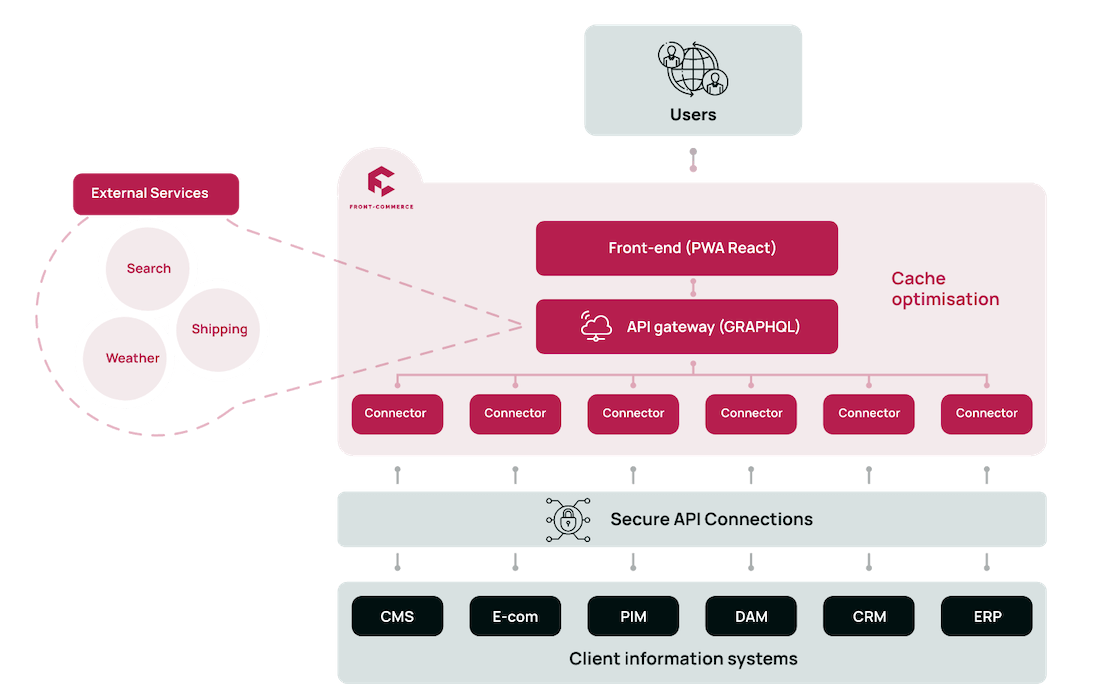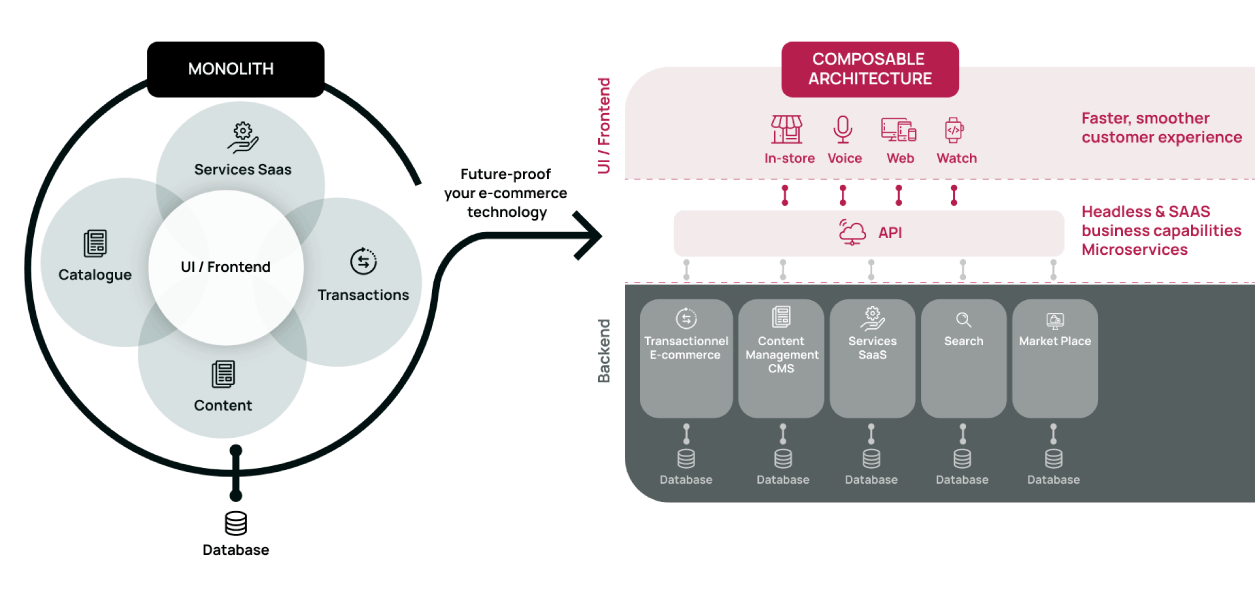How do I build a composable architecture for my E-Commerce?
Standardized best practices for implementing composable commerce are constantly evolving. This can make it challenging for businesses to know how to get started. If you’re interested in adopting a composable commerce architecture for your business, there are a few key steps you can take:
1. Identify your business’s specific needs and preferences. This will help you determine which microservices you need to include in your composable commerce system.
2. Research and compare different platforms and services. There are many different options available, so it’s important to choose the ones that best fit your needs and budget.
3. Assemble your system by choosing and integrating the individual components you need. This will typically involve working with your engineering team or a digital agency to ensure that the components are properly integrated and working together.
4. Test and optimize your system to ensure that it is functioning properly and providing a good experience for your customers. This may involve making adjustments to individual components or the overall system to improve performance and user experience.
Looking to go headless or composable? Get our Important steps to Migration Checklist
Steps to adopting a composable architecture:
1. Identify your specific needs & preferences
2. Research & compare platforms & services
3. Assemble your system: integrate your components
4. Test & optimize
What are the main components of a composable commerce platform?
The following components are typically included, and are then customized to your specific needs:
- A backend that provides the core functionality & features needed to manage and execute e-commerce transactions.
- A set of microservices that can be combined & arranged to create different e-commerce functions. These may include, but are not limited to, components for managing products, inventory, orders, payments.
- Tools and interfaces for assembling and managing the system, including the ability to add, remove and configure individual micro-services as needed.
- Integration with other systems and technologies, such as customer relationship management (CRM) systems, payment gateways, and shipping and fulfillment systems.
- Support for different front-end technologies, such as web, mobile, and voice-powered interfaces, to allow customers to interact with the e-commerce system using their preferred devices and channels.
The components listed above can provide the core functionality and flexibility needed to create and manage a composable e-commerce system.
A Composable Architecture at a glance

Do I need to change my back-end system to adopt composable commerce?
It depends on your current back-end system and your specific e-commerce goals. In some cases, you may be able to use your existing back-end with a composable commerce architecture.
However, changes may need to be made to your existing back-end in order to fully benefit from a composable architecture. For example, if it is, or not, compatible with APIs.
Contact us to find out if your backend is compatible.

Maximise ROI with a Best-of-Breed technical stack.
How long does it take to change an e-commerce architecture to a composable architecture?
The amount of time needed will depend on the scope of the changes you are making. And some experimentation and learning may be required to find the right approach for your business.
In general, however, the process of transitioning to a composable commerce architecture lasts several weeks or a few months. The process involves researching and comparing different platforms and solutions, assembling and testing the system, and training your employees on how to use and manage the new system.
The evolution from a monolith to a composable architecture

Do the benefits outweigh the implementation costs?
The cost of moving to composable commerce will depend on a variety of factors, including the complexity of your current e-commerce system, the specific components and technologies you choose to use, and any customization or integration work that may be required.
In general, however, composable commerce can provide a number of benefits that may outweigh the costs of implementing it, making it a worthwhile investments.

Do you have more questions about Composable Commerce?
Get the reportor contact us today
